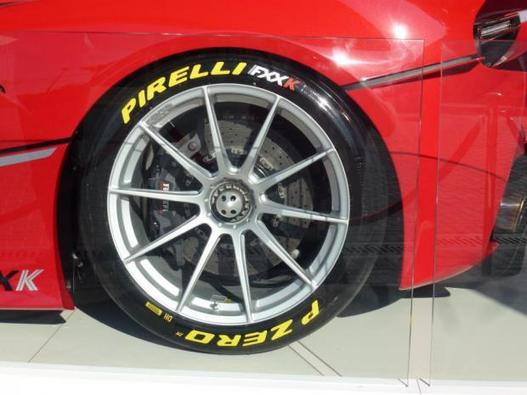Table of Contents
Pirelli Intelligent Tyres
Pirelli Intelligent Tyres
Pirelli Intelligent Tyres Data streamed from hi-tech rubber set to transform performance
Nothing ever stops moving. Especially in the hectic world of tyres? The major tyre companies are always looking for ways to better their rivals. In my opinion, it all benefits the end user, the everyday driver like you and me.
This is the latest disclosure about Pirelli’s intelligent tyres, the P-ZERO tyres, seen here being tested on a Ferrari in Italy.
http://www.pellontyres.co.uk/Tyre/Brand/1293/PIRELLI
A History of Pirelli Intelligent Tyres
Pirelli is an Italian company that is known for its high-quality tyres, including its line of intelligent tyres. Pirelli has a long history of innovation in the tyre industry, and its intelligent tyres are the latest example of this.
Pirelli’s first intelligent tyre was introduced in 2014. It was called the Pirelli Cyber Tyre, and it was developed in collaboration with the Massachusetts Institute of Technology (MIT).
The Cyber Tyre was equipped with sensors that could monitor the tyre’s performance in real-time, including its pressure, temperature, and tread depth. The tyre also had a built-in wireless communication system, which allowed it to send data to the car’s onboard computer and display the information on the dashboard.
In 2016, Pirelli introduced its second-generation intelligent tyre
Of course, the Pirelli Cyber Tyre 2. This tyre was even more advanced than the first, with improved sensors and a more robust wireless communication system. It was also designed to be more energy-efficient and environmentally friendly.
Since then, Pirelli has continued to develop and improve its intelligent tyres. In 2020, the company came out with the Pirelli Cyber Tyre 3. It had a new tread design that was more durable and better sensor technology. The tyre was made to be even more energy-efficient and better for the environment. It could also talk to other vehicles and infrastructure, which made driving feel more connected.
Pirelli Intelligent Tyres have been well received by both consumers and the automotive industry. They are well-known for their high performance and durability, as well as their ability to provide drivers with useful information about their tyres and the performance of their vehicles.
These new tyres are being tested on the new Ferrari FXXK track car. Pirelli Intelligent Tyres
Just like other tyre manufacturers. Pirelli is at the thick end of research and development.
The tyre world is not going to be left behind. Naturally, when it comes to involvement in car technology. so, and the advancements in car electronics.
This applies to whether the Pirellis intelligent tyres are for the motorsport industry. Thus, or the common car that we drive on our roads. In a recent interview with Maurizio Boiocchi of Pirelli Tyres, he said, “We’re continuously working on the P Zero family of products.”
Specifically, to have electronics working inside the tyre interacting with the main computer in the car—something more than a tyre pressure monitoring system,”
Which works from signals emitted from sensors. These sensors are about the size of the British 50p coin. The sensors are fitted in each quadrant of the tyre belts.
Pirelli Intelligent Tyres
Pirelli’s intelligent tyres’ equipment Hence, it has been tested on the LA Ferrari-based FXX K track special cars. It is to be used on supercharged street cars within a five-year period.
Pirelli’s intelligent tyres can pick up the friction coefficient, which can send information about the tyres.
The sensors can provide information.
Therefore, such as longitudinal, lateral, and radial acceleration. Likewise, the temperature and pressure of the tyres.
Pirellis intelligent tyres As a result, it sends the information back to the car’s ECU, which helps calibrate other important factors such as steering and braking.
This can enable things like the softening of the suspension in real-time racing events. Finally, they can also be combined with the car’s traction control system, which would enhance the car’s braking capabilities.
- GT Champiro Winter Tyres
- Dunlop SP Winter Sport 5 Tyres
- Winter Tyres 2024
- Tyre-Wall Markings
- Goodyear Efficient Grip
- GT Champiro Winter Tyres - July 16, 2025
- Dunlop SP Winter Sport 5 Tyres - July 15, 2025
- Winter Tyres 2024 - July 14, 2025

